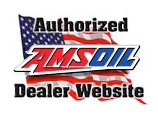28 Dec Avoid Ethanol Related Problems
Ethanol, which attracts water in gasoline, is blamed for a number of small engine issues but these issues can be avoided.
Gasoline has always included octane-boosting anti-knock additives, including:
- Lead
- Methyl tertiary butyl ether (MTBE)
- Ethanol
After discovering that leaded fuel was poisoning the air we breathe, refineries switched to MTBF. Eventually, MTBF was detected in our groundwater, so in 2005 Congress instituted a renewable-fuel standard and refineries started blending fuel with ethanol.
What is Ethanol?
Derived from biomass like corn or sugar cane, ethanol is an alcohol fuel that helps reduce petroleum use and greenhouse-gas emissions, while also supporting agriculture. It’s mixed with gasoline at different ratios to produce the fuel you buy at the pump. Gasoline that contains up to 10% ethanol is referred to as E10, and flex-fuel vehicles are designed to run on up to E85. Unfortunately, ethanol is bad for:
- older vehicles,
- marine engines
- small engines
- boats
- powersports
- landscaping equipment
In the succeeding paragraphs, let’s discuss the ethanol challenges.
Fuel Systems-Challenge 1
Ethanol is an excellent solvent and drying agent that dissolves old gum and varnish deposits from the gas tank and fuel lines. Ethanol can also dissolve the following:
- rubber and plastic gaskets
- fuel line and carburetor components (harden, crack and leak)
- Aluminum/brass corrodes clogging fuel passages
HONDA States: dissolve material can clog filters or leave deposits on:
- Fuel injectors
- Fuel pumps
- Fuel-pressure regulators
- Carburetor jets
- Intake tracts
- Valves/valves guides
The result is a lawnmower, snowblower, chainsaw or other small engine equipment will rum poorly or won’t start.
Small engine manufacturer ECHO agrees stating in its warranty that these deposits can lead to:
- Poor engine performance
- Loss of power
- Overheating
- Fuel-vapor lock
- Improper clutch engagement
- Premature deterioration of fuel lines, gaskets and other engine components
Phase Separation-Challenge 2
Ethanol is hygroscopic (attracting moisture from the air) and will absorb up to three-quarters of an ounce of water per gallon of gas before reaching its saturation point. Once the ethanol has absorbed enough moisture, phase separation occurs. Ethanol and absorbed water are heavier than the gas, it drops to the bottom of the fuel container, leaving gasoline to float on top of the tank.
Most people never notice water the gas tank/can when they refuel their equipment, which can result in a carburetor being ruined by rust and corrosion. The engine can also draw the ethanol/water mixture into carburetor or injectors, leading to lean-burn situation that can increase heat and damage the engine. Additionally, the remaining fuel no longer offers adequate resistance to engine knock since the ethanol has separated from the gasoline. Burning low-octane fuel can also cause damage, especially in two-stroke engines.
Ethanol affinity for water explains why so many ethanol-related problems surface in the marine industry. Some marina personnel claim up to 65% of repair orders are attributed to fuel-systems problems.
Combating Ethanol
While ethanol has become a popular scapegoat for mechanical failure, time is the real enemy. Ethanol related problems affect boats, powersports, lawn and garden equipment more than cars or trucks because seasonal machines sit idle for weeks or even months, causing phase separation. Components exposed to ethanol over time often fail prematurely.
Some fuel additives claim to reverse the effects of phase separation, there’s no way to reintegrate gasoline and ethanol once they’ve separated. It’s best to prevent phase separation altogether by using premium non-oxygenated, ethanol free fuel in your small engines.
Solution
Another solution is to treat your fresh fuel with Amsoil Quickshot which helps stabilizes the fuel to prevent phase separation while reducing varnish, gum and insoluble debris. Amsoil tested Quickshot in fuel containing 10% ethanol and saw a 44% increase in oxidation stability and reduced injector clogging over untreated fuel. Quickshot addresses ethanol challenges to help keep your engines running.


